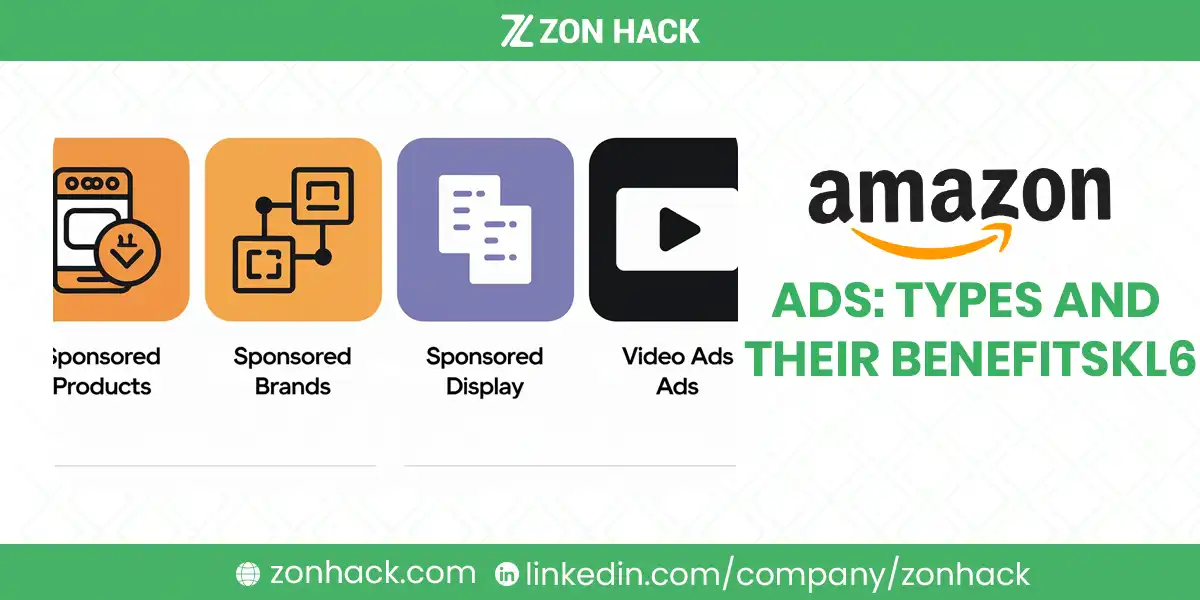Amazon is a bustling marketplace, with millions of products vying for attention. In such a competitive space, how do sellers ensure their products are seen and purchased? The answer lies in Amazon Advertising, a powerful tool that levels the playing field for sellers and brands of all sizes. Amazon Ads help promote products and brands through strategic placements across Amazon’s ecosystem and beyond. This article explores the types of Amazon ads, their benefits, and how they can transform your sales strategy.
What Is Amazon Advertising and How Does It Work?
At its core, Amazon Advertising operates on a pay-per-click (PPC) model, where advertisers pay only when shoppers click on their ads. This system ensures cost-effectiveness, as you only invest in interested shoppers. The platform utilizes a bidding system for ad placements. Advertisers compete for specific keywords, audiences, or placements by setting a maximum bid. The highest bidder wins, but Amazon’s algorithm ensures that ads are relevant to users’ searches.
Targeting Strategies play a crucial role in reaching the right audience. Amazon Ads allow targeting through:
- Keyword targeting, where specific search terms trigger your ads.
- Product and category targeting, which places your ads on similar product listings or within related categories.
- Audience targeting, leveraging Amazon’s rich data on browsing and purchase behavior.
Moreover, Amazon provides robust analytics tools that track metrics like impressions, clicks, sales, and return on ad spend (ROAS). These insights allow sellers to fine-tune their campaigns for maximum effectiveness, ensuring every advertising dollar is well-spent.
Benefits of Amazon Advertising
Amazon Advertising offers a wide array of benefits that cater to sellers aiming to grow their business:
Increased Visibility: Ads appear prominently in search results, product detail pages, and even external websites. This visibility ensures your products reach a broad and relevant audience.
Cost-Effective PPC Model: By paying only for clicks, sellers can control costs and focus their budget on results-driven campaigns.
Wider Audience Reach: With millions of active users on Amazon daily, ads tap into a massive, engaged audience.
Enhanced Brand Awareness: Amazon’s ad formats, such as Sponsored Brands and Stores, enable businesses to showcase their unique identity and build long-term trust with customers.
Shortened Sales Cycle: Ads engage customers who are already searching for products, accelerating their decision-making process.
Improved Organic Ranking: Increased sales velocity from ads contributes to better organic search rankings on Amazon, creating a virtuous cycle of visibility and sales.
Comprehensive Analytics and Optimization: Detailed performance data helps sellers continuously refine their campaigns, improving ROI.
Types of Amazon Ads
1. Sponsored Products
Sponsored Products are the most popular ad type on Amazon, designed to promote individual items. These ads appear in high-visibility areas, such as search results and product detail pages, targeting shoppers based on their search queries or browsing behavior. For example, a seller promoting a set of noise-canceling headphones might target keywords like “wireless headphones” or “noise-canceling earbuds.”
The benefits of Sponsored Products include direct sales impact, precise targeting, and the ability to promote specific SKUs, making them ideal for sellers looking to boost sales of particular items. To use Sponsored Products, sellers must meet eligibility criteria, including having a Professional Selling Plan and eligible products in stock.
2. Sponsored Brands
Sponsored Brands showcase an advertiser’s brand with a custom headline, logo, and a product carousel. These ads are especially effective for building brand recognition and highlighting multiple products simultaneously. For example, a skincare brand might use a Sponsored Brands ad to display a curated set of moisturizers, serums, and cleansers under the headline “Glow Naturally with Our Organic Skincare Line.”
Amazon offers two unique formats for Sponsored Brands:
- Custom Image Ads: These visually rich ads help tell your brand story and capture shoppers’ attention.
- Video Ads: Short, engaging videos demonstrate product features or share the brand’s narrative.
Sponsored Brands require Amazon Brand Registry, ensuring that only verified brand owners or their authorized agents can access this ad type.
3. Sponsored Display
Sponsored Display extends Amazon’s reach by targeting shoppers both on and off Amazon. These ads are ideal for retargeting, helping sellers re-engage customers who viewed their products but didn’t complete a purchase. For example, if a shopper browses a laptop on Amazon but leaves without buying, a Sponsored Display ad might remind them about the product on another website.
Two targeting options are available:
- Audience Targeting: Based on shoppers’ behavior and interests.
- Product and Category Targeting: Ensures contextual relevance by placing ads on similar product listings or within related categories.
4. Amazon DSP (Demand-Side Platform)
Amazon DSP provides programmatic advertising, allowing sellers to run display, video, and audio ads both on Amazon-owned sites and third-party platforms. This advanced tool is ideal for larger campaigns targeting specific customer segments. For example, a fitness equipment brand might use DSP to run a video ad on IMDb, showcasing their new home gym setup to fitness enthusiasts.
DSP offers granular targeting options, enabling advertisers to craft personalized campaigns based on demographics, purchase history, and browsing behavior. It’s particularly effective for brands looking to expand their reach beyond Amazon’s marketplace.
5. Other Ad Options
Other options include Amazon Stores, which allow sellers to create custom storefronts to showcase their brand and products. This free tool is highly effective for increasing customer engagement and fostering loyalty. Additionally, Lockscreen Ads target Kindle and Fire Tablet users, making them a niche but valuable tool for promoting eBooks.
Setting Up an Effective Amazon Advertising Campaign
Creating a successful Amazon Advertising campaign involves a series of strategic steps.
- Define Clear Objectives
First, define clear objectives. Whether you aim to increase sales, enhance brand awareness, or promote a specific product, knowing your goals ensures a focused approach.
- Select the Right Product
Selecting the right products is another critical step. Choose items with high demand, competitive pricing, and strong profit margins to maximize the return on investment. It’s equally important to optimize your product listings with compelling titles, descriptions, and high-quality images to ensure that ads drive conversions.
- Choose the Right Ad Type
Choosing the right ad type aligns your campaign with your objectives. Sponsored Products are ideal for boosting individual items, while Sponsored Brands are better for creating brand awareness. For broader reach, Sponsored Display and Amazon DSP ads offer advanced targeting capabilities.
- Budget Wisely
Budgeting wisely is key. Set realistic daily or campaign budgets and adjust them based on performance. Amazon’s platform provides robust analytics tools, enabling sellers to track impressions, clicks, conversions, and return on ad spend (ROAS).
- Keyword Targeting
Keyword targeting is crucial for ensuring ads appear in relevant searches. Conduct thorough keyword research to identify high-traffic terms. Use automatic targeting initially to gather data, and then transition to manual targeting for more precise control. Including negative keywords helps eliminate irrelevant clicks, optimizing your ad spend.
- Monitor Campaign Performance
Finally, monitor campaign performance closely. Key metrics such as clicks, sales, and ACoS (Advertising Cost of Sales) provide valuable insights. Regularly adjust your strategy by refining keywords, modifying bids, or experimenting with new ad formats to achieve better results.
Summing Up
Amazon Advertising provides sellers with powerful tools to stand out in a competitive marketplace. By leveraging ad types like Sponsored Products, Sponsored Brands, Sponsored Display, and Amazon DSP, businesses can increase product visibility, drive sales, and enhance brand recognition. The benefits of Amazon ads are manifold, from cost-effective PPC models to detailed analytics for performance tracking. However, success requires a strategic approach, including clear goal-setting, thoughtful product selection, and ongoing campaign optimization.




